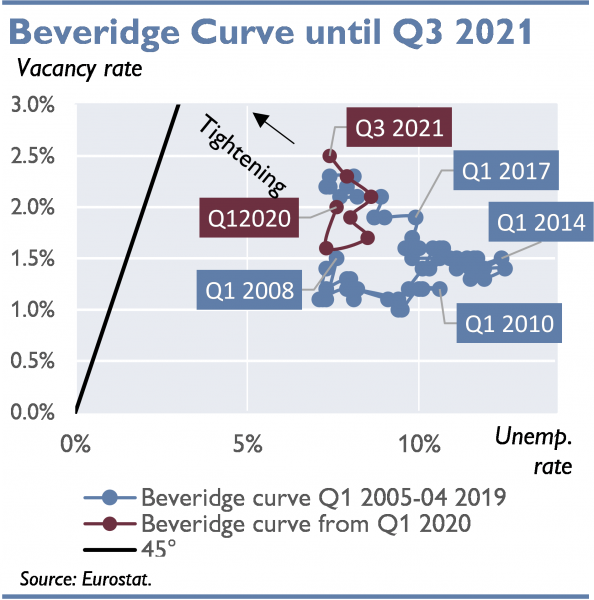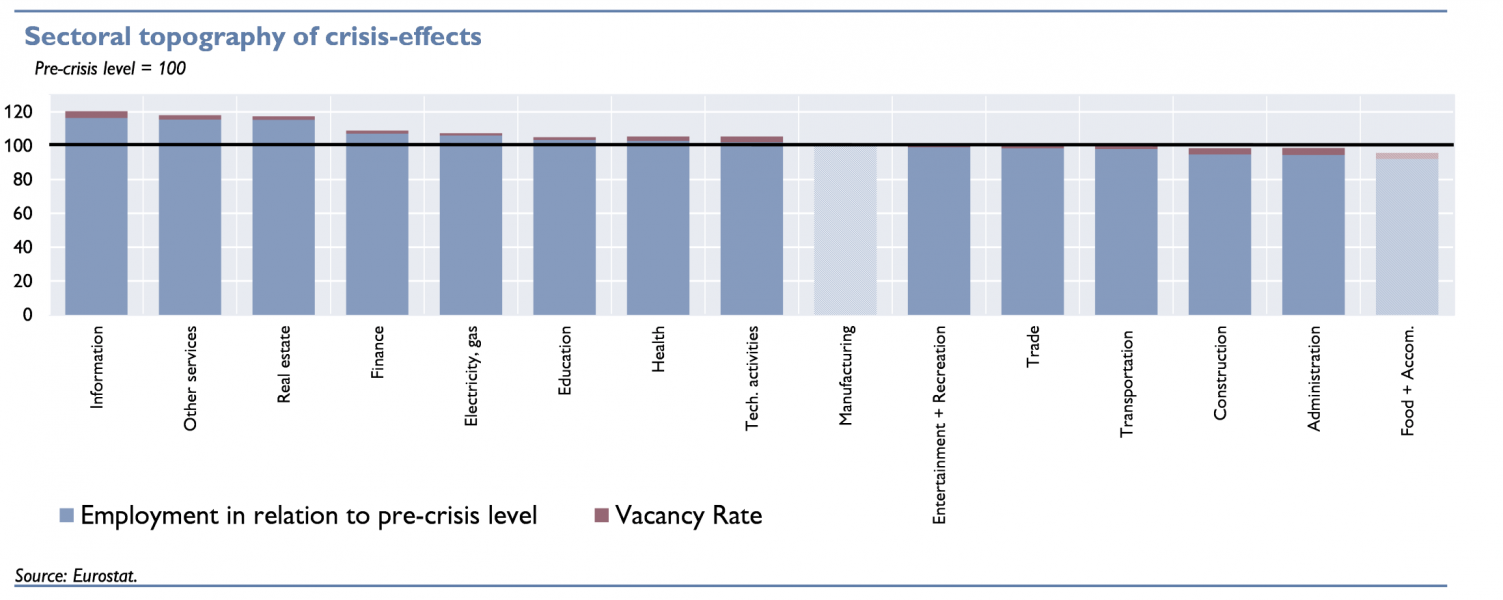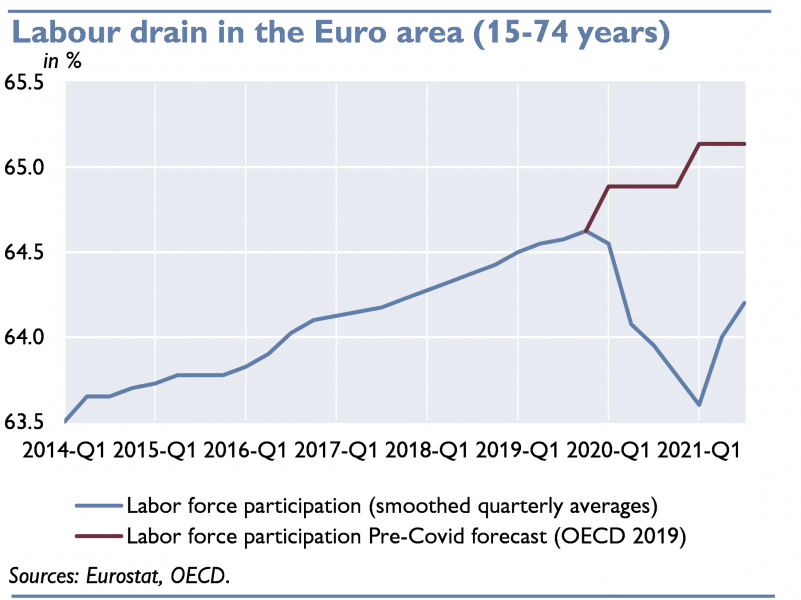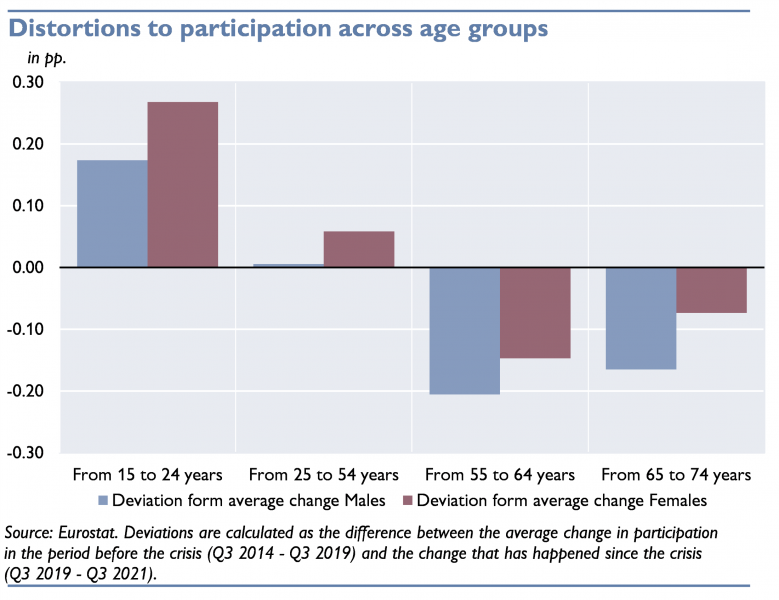References
Anderton, Robert; Bothelo, Vasco; Consolo, Agostino; Dias da Silva, António; Foroni, Claudia; Mohr, Mathias and Vivian, Lara; 2020; The impact of the COVID-19 pandemic on the euro area labour market; ECB Economic Bulletin 8, 2020.
Anderton, Robert and Bothelo, Vasco; 2021; The impact of the COVID-19 crisis on the euro area labour market for men and women, ECB Economic Bulletin Issue 4, 2021.
Baert; Stjin; IZA Policy Paper No. 177: What Shifts Did COVID-19 Year 2020 Bring to the Labour Market in Europe?; IZA Policy Paper Nr. 177.
Bodnár, Katalin and O’Brien Dery; Labour, 2021 supply developments in the euro area during the COVID-19 pandemic; ECB Economic Bulletin, Issue 7, 2021.
Doleschel, Julia and Manu, Ana-Simona; 2021; Scarring effects of the COVID-19 pandemic on the global economy – reviewing recent evidence; ECB Economic Bulletin, Issue 7, 2021.
Flek, Vladislav; Hála, Martin and Mysíková Martina; 2020; Assessing the job finding probability of older and prime-age unemployed workers; Prague Economic Papers, 29, 424-444.
Gros, Daniel and Ounnas, Alexandre; 2021; Labour market responses to the COVID-19 crisis in the United States and Europe, CEPS Working Document 2021-21/ April 2021.
ILO, 2021; Global Wage Report 2020-21: Wages and Minimum Wages in the time of COVID-19, International Labour Office, Geneva.
IMF, 2021; World Economic Outlook 2021 April – Chapter 3: Recessions and Recoveries in labor markets: Patterns, policies and responses to the COVID-19 shock, Washington DC.
Hogharth, Terrence; 2021; COVID-19 and the demand for labour and skills in Europe – Early Evidence and implications for migration policy, mpi Europe, February 2021.
OECD, 2020; OECD Employment Outlook 2020: Worker Security and the COVID crisis, OECD Publishing Paris.
OECD, 2021; OECD Employment Outlook 2021: Navigating the COVID-19 crisis and recovery, OECD Publishing Paris.
Weber, Enzo and Neupert, Roman; 2021; European labour market dynamics after the outbreak of the Covid-19 crisis; IAB-Forum, 2021.









